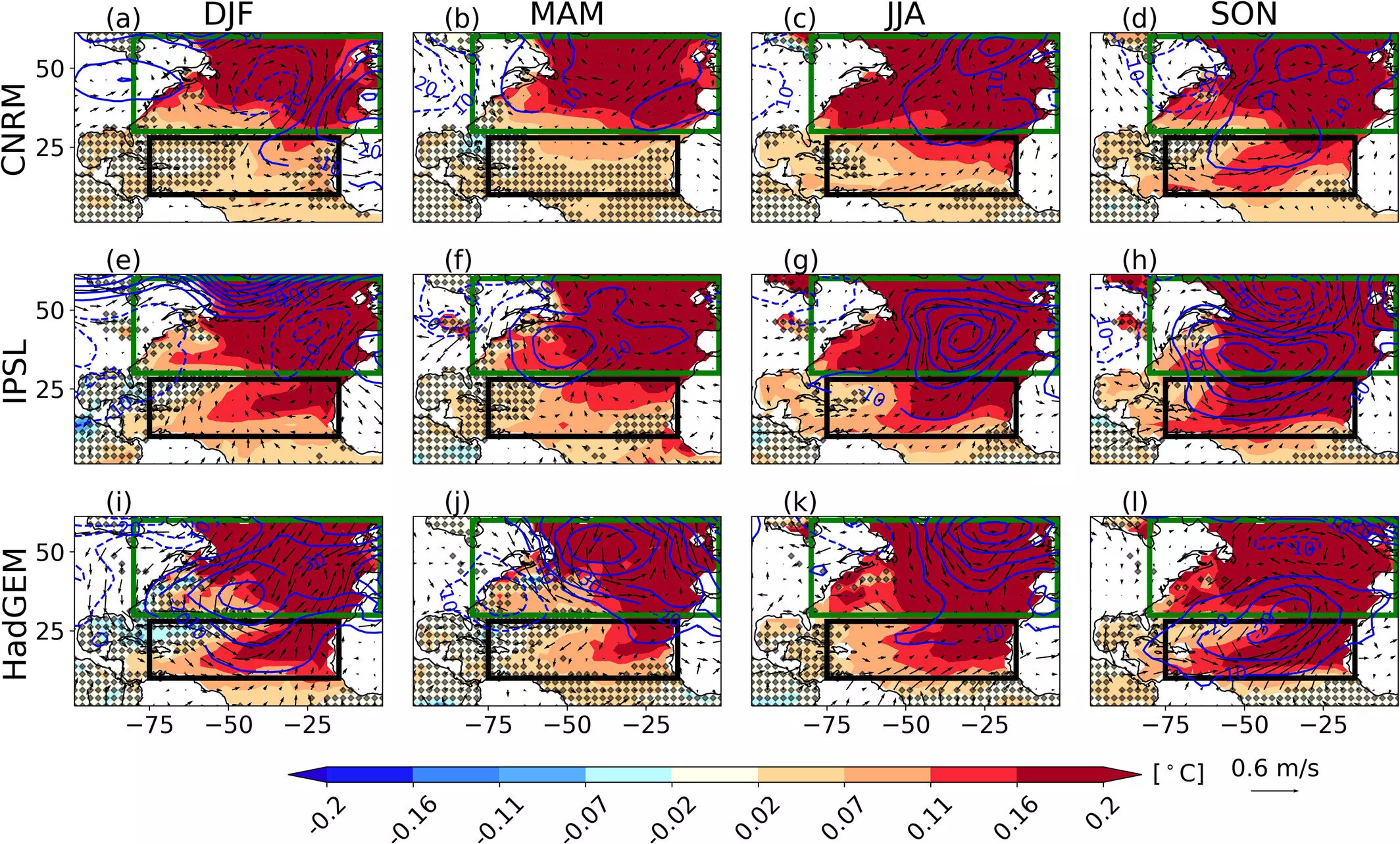Recent research sheds light on the significant impact ocean dynamics have on long-term climate variations, particularly in the Atlantic region. A groundbreaking study reveals that the behavior of the upper ocean, specifically the mixed layer where warm surface waters interact with cooler layers beneath, is pivotal in driving a phenomenon known as Atlantic Multidecadal Variability (AMV). This variability is not merely an academic concern; it has extensive ramifications for global weather systems, affecting climates from North America to Europe and even impacting regions as far away as Africa.
The concept of AMV refers to the long-term fluctuations in sea surface temperature and associated oceanic and atmospheric phenomena. The research team, led by Dr. Balaji Senapati from the University of Reading, challenges the traditional notion that heat exchange between the ocean and atmosphere is solely responsible for these climate patterns. Instead, the study underscores the importance of the mixed layer’s depth as a crucial element in climate dynamics. When the North Atlantic experiences higher-than-average temperatures, the trade winds weaken due to altered interactions with the mixed layer, leading to a shallower oceanic layer during the summer months. This warming creates a cycle: a warmer northern Atlantic fosters a shallower mixed layer, which further heats the tropical region, thereby reinforcing the AMV’s positive phase.
This self-reinforcing feedback mechanism poses crucial questions about the interactions within our climate systems. As the study illustrates, the consequences of a warmer mixed layer extend beyond localized weather phenomena; they influence a broader range of climatic outcomes, such as hurricane patterns and rainfall distribution in areas like the Caribbean and the Sahel. As the AMV shifts toward its cooler phase, the dynamics reverse, resulting in cooler temperatures across vast regions of the Atlantic. Understanding this feedback is essential to navigate the complexities of climate change and to forecast its future trajectory accurately.
The insights garnered from this study bear significant implications for climate modeling. Current predictive models may not fully account for the layered interactions within the upper ocean, potentially leading to unreliable forecasts regarding AMV and its widespread effects. By integrating the newly identified processes relating to ocean mixing into existing models, scientists could enhance their ability to predict long-term climate trends. This advancement is invaluable, especially as societies grapple with the pressing challenges posed by climate change, necessitating accurate and strategic responses.
As our understanding of climate dynamics evolves, it becomes increasingly important to reevaluate existing models and assumptions regarding ocean-atmosphere interactions. By placing a stronger emphasis on oceanic processes, particularly the role of the mixed layer in shaping climate variability, researchers can contribute to a more accurate and comprehensive understanding of climate systems. This research not only underscores the complexity of our planet’s climate but also highlights the urgency of developing effective response strategies amid the realities of a changing world.


Leave a Reply